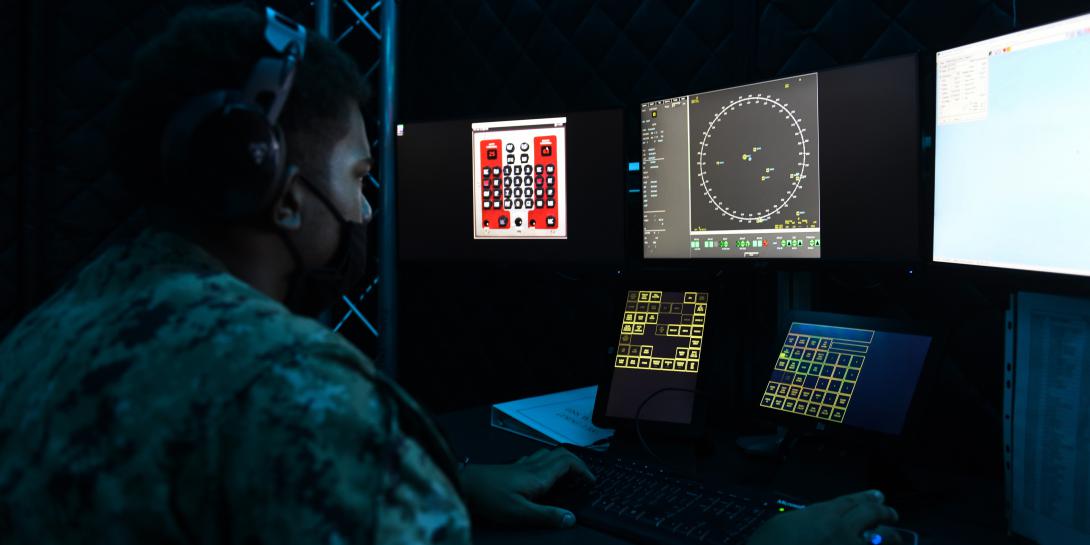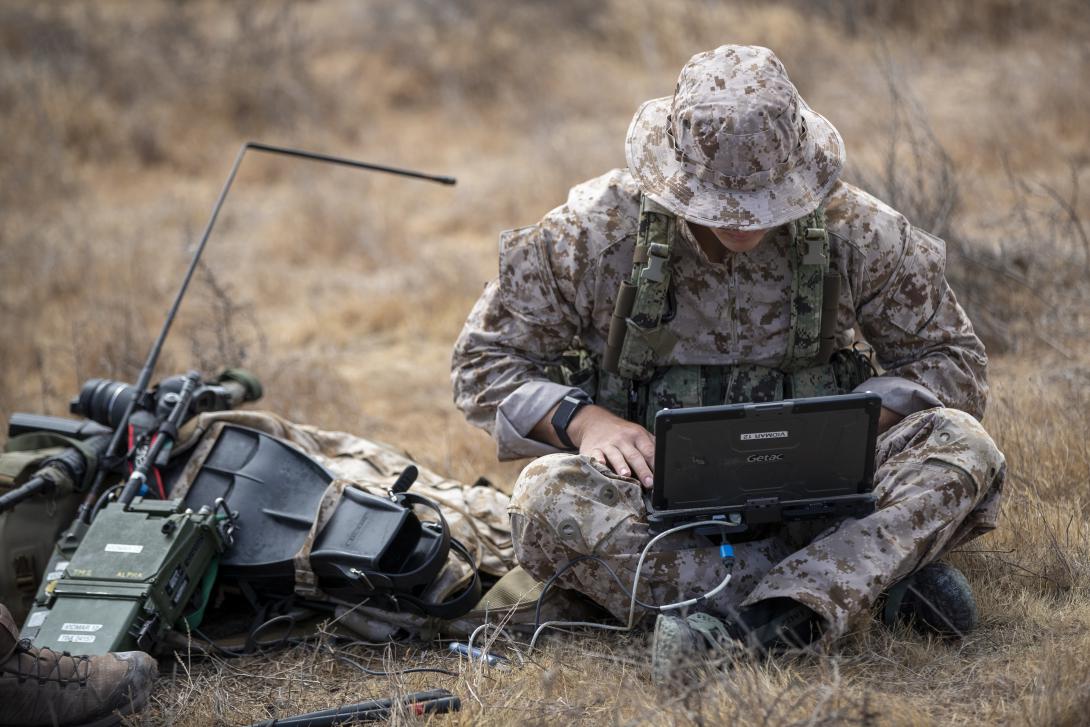Challenge Equals Opportunity for Naval Information Warfare
The U.S. Navy is ramping up its information warfare efforts with a broad emphasis on technology and training. The technology comprises traditional capabilities but also includes new ones that focus on badly needed areas that have emerged from adversarial advances. The training aspect seeks to arm skilled personnel with new tools that provide a rapid and realistic environment that empowers them to face new and emerging threats.
“I don’t think information warfare has ever been in this great a demand,” says Vice Adm. Kelly Aeschbach, USN, commander of Naval Information Forces. “Everybody wants to see us fully integrated, wants to leverage the talent that our people bring, and wants to be able to use the capabilities that we currently have and that we’re on path to deliver as we go forward.”
She offers that her biggest concern is just keeping pace with the changes that information warfare (IW) is undergoing. Specifically, this includes top-notch training for personnel as fast as possible, along with the traditional challenge of quickly delivering the best equipment and new capability to the force.
While the demand for IW is increasing exponentially, complexity also is growing in the skill set, she offers. A key to keeping pace with this growth is embracing the live, virtual, constructive (LVC) training environment. “We have challenges in our ability to actually train real-time in real environments with those capabilities,” she says, adding that in some cases the Navy runs the risk of revealing those capabilities during training activities. Also, the service is not always able to operate in areas outside the United States because of spectrum conflicts.
So LVC is viewed as the key enabler for an environment that permits exercising vital IW capabilities, the admiral continues. The training can be run concurrently to view the totality of effects, and performance can be measured. This is important because the Navy needs hard data in a realistic IW training environment to meet the increasingly demanding needs of the discipline. This also will help determine people that need to improve, team performance relative to others and how IW is truly integrated in the fight. “We’re on a path to deliver that, but it’s going to be a tremendous opportunity for us in the quality of the training that we’re doing and in our ability to be more effective in how we continue to improve our training,” she declares.
And the training syllabus is expanding, Adm. Aeschbach allows. The global competitive environment presents a broader range of potential scenarios, so training needs to be deeper and more dynamic while addressing a wider range of scenarios, she says. Using LVC will accelerate the process while accommodating the growing complexity of the IW environment.
She continues that her organization has information warfare commanders integrated in carrier strike groups. This effort is expanding into amphibious readiness groups, and experts already are determining how to do the same at the operational level for maritime operations centers. “There is no question that we want information warfare as part of those efforts,” the admiral states. “The challenge is how do we make permanent positions, how do we decide exactly how we want to organize, and how do we get on a path to train most effectively to ensure we’re delivering that—and all of that moving very swiftly?”
When it comes to personnel, Adm. Aeschbach offers that her activity has the quality it needs. All of the career fields that constitute IW remain attractive to naval personnel, and the increased activity by China and Russia has enriched the demand for related skill sets. She allows that some select areas may require “deepening the bench” for more exquisite capabilities, such as space and electronic warfare. The key is not tremendous growth but rather aligning existing talent against growing problems. And attracting and retaining talent that thinks innovatively is vital, she adds.
For IW technologies, the Navy is pursuing advanced counter command, control, communications, computers, cyber, intelligence, surveillance, reconnaissance and targeting (C5ISR&T) capabilities. Adm. Aeschbach allows that most of the IW focus for technology, training and crewing for the fleet involves the ability to conduct counter C5ISR&T. This includes maximizing proficiency on existing systems as well as incorporating new capabilities.
Innovation will play a key role, of course. For innovative IW, the Navy is looking for resilience and reliability, she explains. New capabilities don’t always work as intended when integrated, she says, especially with regard to maintenance or sustainment. Industry partners “need to think about that on the front end so we’re not working harder on the back end,” she emphasizes.
And industry can focus on software solutions and away from traditional hardware-defined solutions, she says. The Navy will need an architecture that allows it to update capabilities via software instead of hardware. This software must be resilient, reliable and capable of meeting cybersecurity standards and methodologies for delivering it to platforms, she adds.
Another point of focus concerns the IW warfighting development center. The admiral wants to be certain that it actually is delivering the doctrine on how these new technologies and capabilities are integrated. “We still are rather formative in information warfare—about 10 years in as a mission area—and we have covered a lot of ground in terms of tactics, techniques and procedures, but we have more work to do,” she states, adding that agility and readiness to integrate new techniques is essential.
High on the list of vital capabilities is battlespace awareness, the admiral allows. This spans understanding the environment from the seabed up to space, as well as penetrating knowledge of potential threats. The Navy has made improvements in this discipline, but she adds that one key area will be how to harness automation advances. Managing the data coming in from a plethora of sensor systems will be essential for IW to have the battlespace awareness it needs, and automation will be vital both to manage the information and to provide the tools for personnel to sort through and glean relevant information to generate effective assessments. This will enable the Navy to move quickly and decisively to either protect itself or deliver lethality as needed, the admiral emphasizes.
When it comes to countering enemy IW versus taking the IW fight to the enemy, Adm. Aeschbach offers no bias. The Navy treats the two equally, although in some operational scenarios, one will take primacy over the other. Nonetheless, the Navy is striving to ensure readiness in both disciplines along with “the lethality we could deliver to enhance mission effectiveness across the Navy,” she adds.
“We are an element in every other mission warfighting area,” she adds. “The whole Navy can’t be effective without us fully integrated, so we always have to be thinking about how we’re raising our game and enhancing our own effectiveness while we’re also working on the ability to counter what the competition may bring to the fight.”
This balance must be applied in terms of both resource investments and training, the admiral points out. “If you don’t have great defense, you don’t have great offense.”
Space plays a role in IW, and Adm. Aeschbach states that the Navy is eager to remain connected to the new Space Force, as this is in keeping with the Navy’s longtime use of space assets and capabilities. The Space Command has a Navy IW flag officer as the J-6, and other efforts are underway to strengthen space assets.
But, it does have some new initiatives to increase that connection. Last summer, the Navy established a maritime space officer designator within IW. The admiral allows that this will be a small officer community—ultimately about 90 officers—for whom about 25 were recently selected. She continues that these officers will work in the maritime operations centers, bringing a depth of knowledge of space and its capabilities for the Navy. Currently, the Navy is examining realigning these space positions to ensure they are effectively distributed in operations centers and afloat staffs.
The Navy also is working closely with Marine Corps Forces Space on integration with them, she adds. This would entail supporting the entire naval component across the breadth of the Navy and Marine Corps.







Comments